Background
In 2009, the Programa Nacional de Inglés en Educación Básica, PNIEB (National English Program in Basic Education, or NEPBE) was released as a pilot program by the SEP. Although specific textbooks have not been recommended in the NEPBE, the Ministry of Education had authorized until 2011 twelve publishing companies to develop textbooks for children (Sayer, 2012). The state English coordinators, made their decisions on what books to use according to the publishing companies’ offers. For example, cost and availability, the additional materials included, and the teachers’ training courses offered, were among the things taken into consideration.
Due to the important role that the textbooks played in this National English program, it was relevant to evaluate them carefully. This study was focused on identifying the pedagogical characteristics that the textbooks (chosen at random) English from Fernández Editores, and Do it! from University of Dayton Publishing had in relation to the curriculum guidelines. These textbooks were used as a support for the NEPBE during the school year 2010- 2011. The textbooks were also evaluated in order to see how they contributed to the learning goals set by the Ministry of Education.
The main reason of this evaluating both books was because a Mexican company produced the first one and an American company launched the second. This differentiation seemed appealing for the researcher as it was important to analyze how culture was being promoted in each textbook which could vary according to each publishing company’s nationality. Also it was relevant to take into account that most series of course books to teach children are designed in English speaking countries which can be a disadvantage because it could not be appropriate to the students’ needs nor to the Mexican culture. As Graves (2000) states, ‘‘the content or examples may not be relevant or appropriate to the group you are teaching’’ (p. 147).
Problem Statement
Interest in evaluating the textbooks arose from four main concerns. Firstly, it was noticed that the textbook was one of the most used teaching materials in elementary schools (in the study [1] I conducted in 2009). Secondly, the prerogative role that the course books had in the teaching and learning practices was identified. Thirdly, the realization was had that evaluating textbooks for teaching English was a not common practice. Finally after having revised the NEPBE’s objectives there was concern with the actual congruency among both of books.
In this sense, authors such as Weir and Roberts (1994) support the evaluation of teaching materials by stating two main reasons. Firstly, the evaluation of the textbook “can inform theoretical disputes about directions to be followed in language teaching or in teacher education” (p.11). Second, it is a tool to indicate the suitability of particular approaches or techniques with the contexts in which they are being used.
The evaluation of the textbooks can also be considered an educational necessity because: it can reveal how they are supporting the national curriculum to achieve the learning goals, it can show how they can be improved or serve as a justification to change them. Finally, by evaluating the books used at primary education, there can be an opportunity not only for revising their pedagogical value, the cultural component and their relation to the established curriculum but also for making proposals that recommend better materials that improve the teaching of English to children.
Objectives of the study
The main objective of the current research was to evaluate the overall pedagogical value of two textbooks used at the National English Program in Basic Education and their suitability towards it. Specifically, the textbooks used in 1st and 2nd grade, whose names were English, and Do it! The Specific Objectives were the following:
1. To evaluate the textbooks’ physical characteristics.
2. To contrast the textbooks’ language content with the CEFR’s specifications.
3. To evaluate the included textbooks’ text-types.
4. To analyze the contexts in which the tasks and activities of the chosen books are developed.
5. To determine to which extent the textbooks are aligned with the Social Practices Approach.
6. To evaluate how the textbooks’ content contribute to the development of specific competencies.
7. To analyze how culture is included in the course books.
Research Questions
The evaluation of the chosen books comprises seven categories: Appearance and organization, Language content, Text-types, Tasks and activities, Approach, Competencies development, and Cultural content. All of these categories aimed to answer the following general question:
Are the textbooks used in 1st and 2nd grades in the National English Program in Basic Education pedagogically appropriate for children, according to the syllabus guidelines and theoretical foundations?
The specific research questions were:
1. Are the physical features, such as appearance and organization, of the textbooks used at the NEPBE appropriate for children of 1st, and 2nd grade?
2. What language content is included in the textbooks?
3. Are the text-types included in the textbooks coherent with the literary and ludic environment guidelines suggested in the NEPBE?
4. Are the tasks and activities offered by the textbooks developed in familiar, community, academic and educational environments as the NEPBE establishes?
5. Are the textbooks aligned with the Social Practices Approach suggested in the NEPBE?
6. Do the textbooks contribute to the development of the ‘specific competencies’, related to the doing with, knowing about, and being through the language? If so, how?
7. How do the textbooks incorporate the knowledge of other cultures and languages?
Theoretical framework
For children’s Foreign Language teaching, Cameron (2003) suggests an ordered sequence. It goes as follows: literacy (reading and writing) is separated from the rest since they represent more formal instruction. Oral-aural skills are introduced first because spoken language is the medium though which the new language is encountered, understood, practiced and learnt. Vocabulary will be introduced after (vocabulary is referred to as the words, their meaning and links between them). Just then, discourse skills or interaction, referring to conversations and extended talks, will be introduced. Finally, grammar will not be explicitly introduced but it will emerge from the space between words and discourse skills.
The reasons why the teach should be focused on listening and speaking is because the youngest children ‘have not developed their writing ability in their mother tongue… teaching them the English writing may confuse them’ (House, 1997). Another reason is because teaching oral-aural abilities at early years can develop positive attitudes towards the language which in the future could contribute to the success of the rest of the communicative abilities (Burillo, et al, 2006).
Halliwell (1992) and Irujo (1997) have researched topics related to children’s characteristics as language learners. They arrived at some conclusions, which can help teachers and materials or textbooks designers to implement activities that are leaner-centered. These conclusions are described as follows:
1. Children have the ability to grasp meaning: Children “are able to understand what is being said to them even before they understand the individual words…it is part of human communication” (Halliwell, 1992, p. 3).
2. Children are creative in the use of limited language resources: This phenomenon refers to the fact that human beings do not need to be proficient in the language to communicate or interact with other people. Children make up words, grammatical forms and concepts using their existing knowledge in order to find other ways of conveying meaning.
3. Children have the instinct for play and fun: Children have an inner instinct for playing and having fun. Their capacity for finding drama and having fun in activities is undeniable. They include a tone of individuality to much of what they are asked to do. In almost any activity, they let their personality emerge and that is why it is a powerful contribution to learning. Through their sense of fun and play, the children bring life to the language.
4. The role of imagination in children: Language teaching should be concerned with real life. However, imagination and fantasy cannot be left out in the search of reality in the classroom and textbooks.
5. Children learn when they are doing something that has an authentic purpose: One of the meanings of authenticity in language is that there should be a reason for producing language that goes beyond practice. This means that the activity itself has to have an authentic function just as in real world. For instance, language is used for clarifying, requesting, apologizing, criticizing convincing, explaining, inviting, praising, slandering, motivating, etc.
6. Children learn when they are involved in determining what and how they will learn: The main reasons why children should be taken into account when deciding what to learn and how to do it is because interest and engagement increases. Students become more independent and responsible for their own learning.
7. The role of literature in children: Ghosn (1997) suggests that children’s literature provides a motivating and meaningful context for language learning since they are naturally drawn to stories. Besides that, literature can also promote academic literacy and thinking skills.
8. Teaching culture to children: Culture and language are recognized as an integral part of the language learning process (Clouet, 2006). Materials should then include elements that promote intercultural knowledge in order to foster culture recognition and respect.
Research method
The current research was conducted through a case study. The unit or single identity in this research were two textbooks of the publishing companies Fernández Editores and University of Dayton Publishing used in 1st and 2nd grades of elementary schools using the National English Program in Basic Education.Taking into consideration different sources and contributions from different authors created the checklist for the evaluation which comprehended the following areas:
A. Appearance and organization
B. Language content
C. Text-types
D. Tasks and activities
E. Approach
F. Competencies Development
G. Cultural Content
Results and discussion
The textbooks that were analyzed are: ‘English’ and ‘Do it’. In order to have an easier reference to the books, from now on they will be indicated as textbook one (Soria & Castañeda, 2010), and textbook two (Day, 2010) (See Image 1 and Image 2).
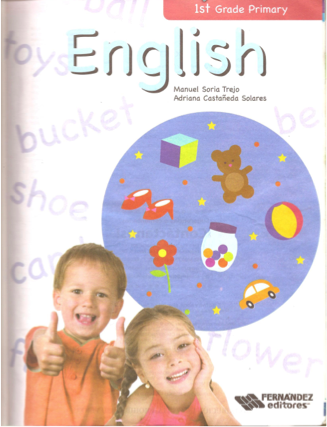
Image 1. Page cover of the Textbook one.
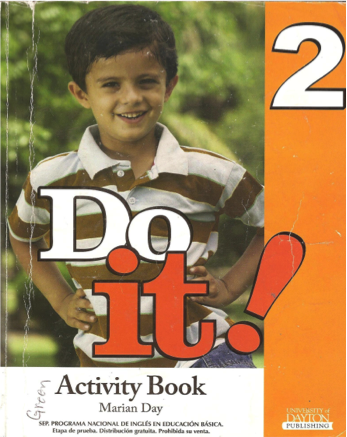
Image 2. Page cover of the Textbook two
Appearance and organization
Are the physical features, such as appearance and organization of the textbooks used at the NEPBE appropriate for children of 1st and 2nd grade?
Both textbooks look attractive and organized at first glance: they are colorful, spacious, and they contain plenty of photographs (textbooks two) and drawings (textbook one) that accompany the instructions and activities. However, some considerations have been analyzed and it can be said that both textbooks are not fully appropriate for children of 1st and 2nd grade. They both have some positive characteristics, but also have some limitations that may affect the children’s learning.
Both textbooks have in their front-page attractive photographs of children. On textbook one, there is a girl and a boy and on textbook two there is only a boy. These pictures can be motivating to the target children as pictures in both textbooks show happy smiling children doing positive signs, like being ready for learning. However, both textbooks might be representing some kind of prejudice since the figure of a boy is more emphasized. For example, in textbook one, the girl in shown in a passive way with her hands on her face as appreciating something while the boy is showing an attitude of an active learner with gesturing hands. Moreover, the children on textbook one are blond, which can be considered as a racist expression. Finally, in textbook two, an image of a girl has been omitted and only one boy is presented on the cover page.
This pattern is repetitive. For example, there are complete pages in textbook two, where boys or men are only included (See image 3). Apart from that, the pictures representing jobs and occupations have a clear preference towards men (See image 4). For example only 2 out of 8 pictures representing jobs and professions show women. Furthermore, in textbook one, there is an activity in which a girl has been treated as an object (See image 5). These kinds of omissions can be viewed as gender bias, sexism and stereotyping, which is not far from Porreca (1984), Florent and Walter (1989), and Renner’s (1997) (cited in Litz, 2005) conclusions about the textbooks are influenced by their authors’ social biases.
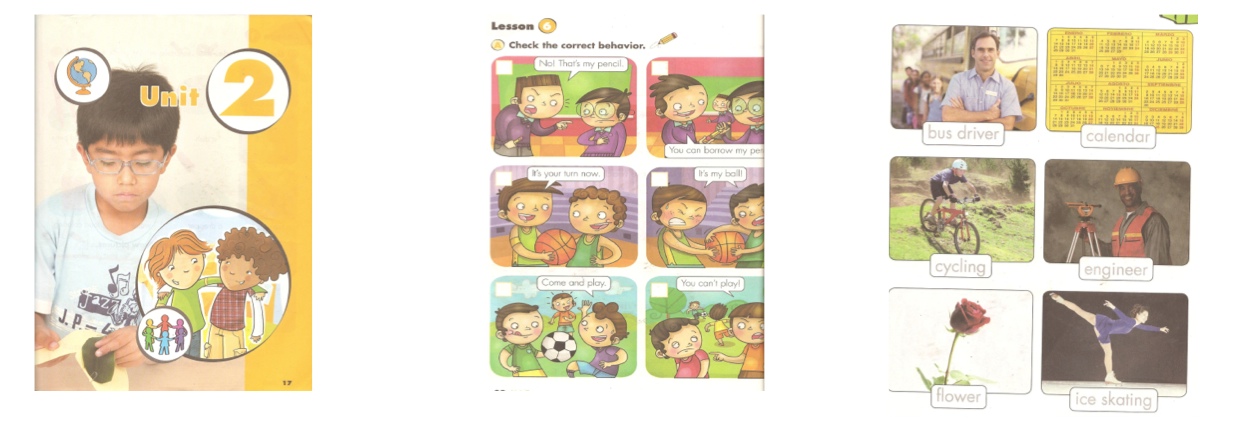
Image 3. Elements showing gender bias in textbook two
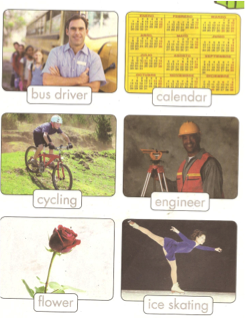
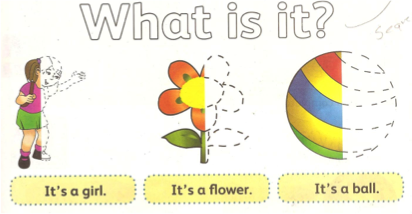
Image 5. A girl treated at the level of object.
Nonetheless, the prejudice that both textbooks represent in their illustrations, it can be said thattextbook one is attractive in terms of the bright colors that are used and the funny toys, letters and objects that are included (See Image 6). The use of these kinds of drawings is especially important since teaching should be personalized to the students’ age. Besides that, drawings provoke imagination, which has a central role in learning a foreign language.

Image 6. Funny letters, crayons and objects
However, there is not a balance between the presentation of fantasy and reality. The book contains 5 photographs versus more than one hundred different drawings that represent an object, a scenario, a situation/action or a process. Although language teaching should be concerned with real life, fantasy cannot be left out in the search of reality in the classroom. Therefore, there must be a combination between allowing children to imagine and creating meaningful and real opportunities for practicing the language (Halliwell, 1992). In this case, the meaningfulness of the language can be acquired by giving children the chance of relating their current life, such as tasks, immediate surroundings and experiences with the language through photographs that represent that reality. This finding is similar to Wang’s (2008) conclusion in his study about Taiwanese textbooks. In both research studies the pictures and drawings can be considered as inappropriately selected. Textbook two has a more balanced quantity of real and fantasy illustrations, though (there are 132 photos versus 71 drawings). In general terms, textbook one lacks meaningfulness while textbook two is more concerned with it (See Image 7).

Image 7. Cartoon (textbook one) and photograph (textbook two)
In addition to the limited number of photographs included in textbook one, there is an important aspect to comment. There are pictures that represent an ideal way of living by promoting wealth (Image 8). For instance, the child showing a basket full of toys, sitting on a wooden floor is not a typical image that children attending to public primary schools in Mexico are likely to live. In addition to this, the types of houses and the furniture are elements that denote high social class’ lifestyle. These images may be evaluated as appropriate if the objective was to represent the lives of people in other countries. However, in this textbook the following activities did not approach to this purpose. Besides that, even when the photograph shown in Image 2 (the page cover of textbook one) and Image 8 represent smiling children that convey happiness and joy, it is doubtful that they seem like children attending public primary schools. A special and a personal comment is given to this statement with the desire of not making stereotypes of the Mexican children: these images seem to be promoting that being fair skinned with blonde or light brown hair is a condition to speaking English. These pictures are more likely to be seen in a magazine as the children were chosen to show beauty. The same kind of prejudice was also found in the Brazilian textbooks evaluated by Da Cruz (2010) in which all the pictures represented a USA blond hair family and no other nationalities and races were taken into account.
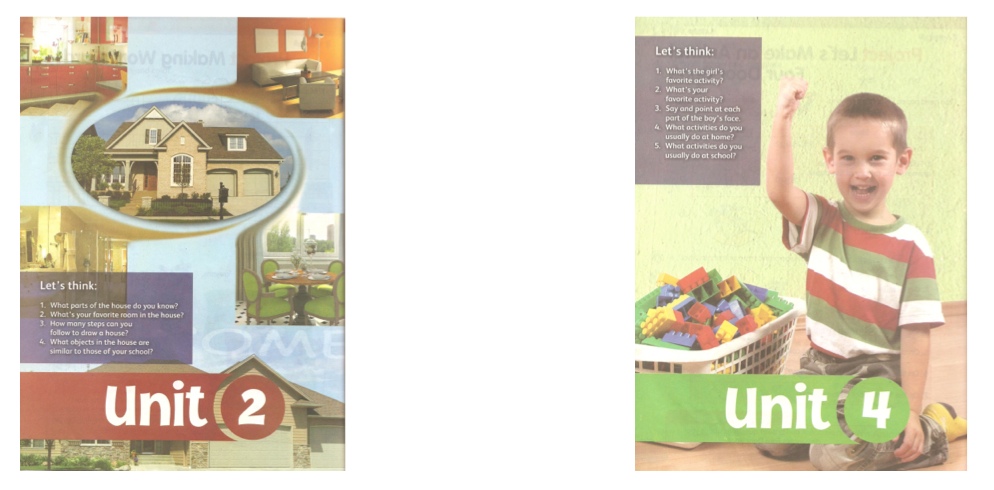
Image 8. Examples of photographs promoting wealth
A last finding about illustrations is that they may confuse children, as some of them are hard to interpret. For example, in textbook two, once more people are treated as objects for representing places (See image 9). This idea is opposite to Yu Chang’s (2007) (cited by Wang, 2008) recommendation about the clarity and ambiguity avoidance in books used to teach children.
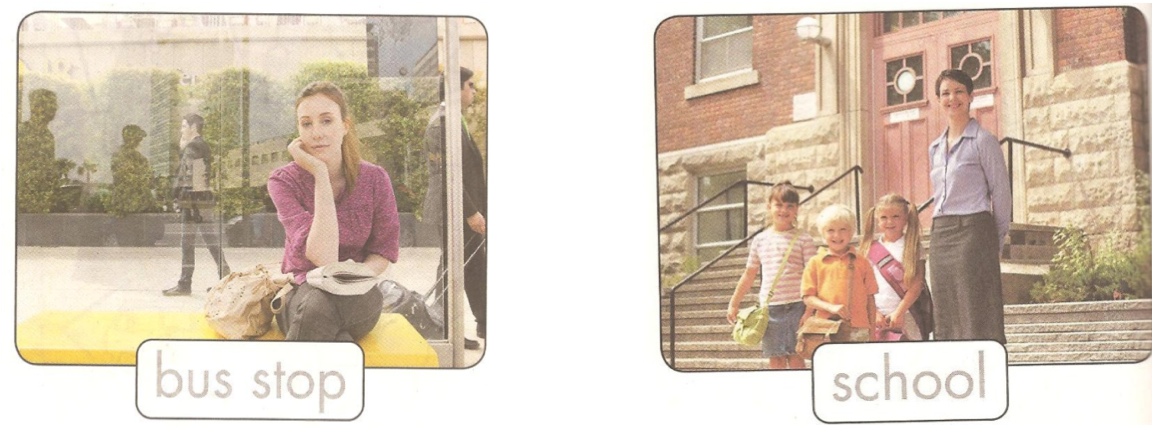
Image 9. Confusing pictures: people representing places
In relation to the way in which the textbooks are organized, two characteristics were observed. Although, the textbooks have the same format throughout the activities and the pages, using a standardized model and symbols for units, lessons, activities and instructions, there are some omissions or errors in the representation of symbols in both textbooks (See Image 10) that might affect the children’s understanding of language and instructions. This failure does not contribute to the creation of Routines promoted in Bruner’s theory. The benefit of Routines is that children are given the opportunity to predict meanings and intentions (Bruner 1983, 1990, cited by Cameron 2003); in this case, they can know when it is time for listening or when it is time for making projects. However, if representations are not correct, children cannot take advantage of them.
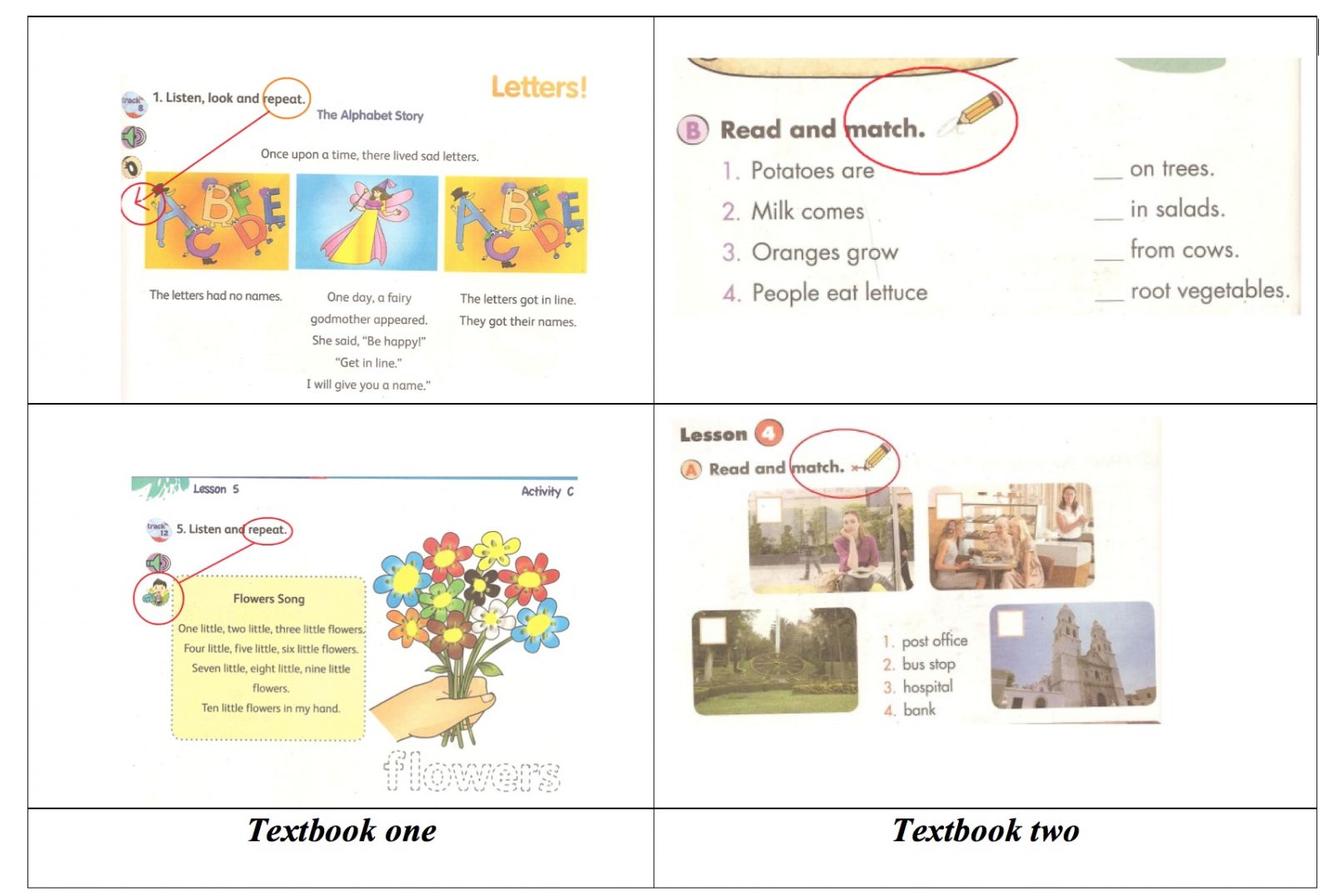
Image 10. Examples of missing symbols or error representation
A problem with regard to the representation of units was also observed. For instance, the units within the book are not given an explicit name. As a consequence, teachers, children and their parents cannot tell what the content of the book is unless they browse through the unit. In addition, although both textbooks introduce the new units with various types of photographs (textbook two has given a strong emphasis on Mexican common scenarios or situations), they do not usually correspond to the content or topics that will be taught through the following lessons. This fact might confuse children since while they activate their schemata or previous knowledge when looking at the first picture; the following activities seem totally different (See image 11).

Image 11. Sample of the cover page of a unit in textbook two
Finally, even though the words are printed in a font size that make them easy to read, the actual print is not big enough for children who are starting the development of literacy skills. However, this is not the main problem, the main drawback is that with the large amount of text presented children are cognitively and psychologically pressed not only to understand but also to develop their literacy skills. Even when these skills are suggested to be introduced after oral-aural skills (Cameron, 2003; House, 1997; Burillo, et al, 2006) and that they should be developed when children have acquired the literacy processes in their mother tongue (Soderman & Oshio, 2008), in both textbooks there is too much irrelevant text, which may confuse children, leading them to consider language as boring or difficult, as shown in Image 12. Taking this aspect into account is particularly important since learning ‘English at early years can develop positive (or negative) attitudes towards the language which in the future could contribute in the success of the communicative abilities’ (Burillo, 2006). Moreover, the quantity of text included is irrelevant since children will not focus their attention to read it for one main reason: children interpret meaning, using various resources, such as intonation, facial expressions, gestures, actions, and contexts without necessarily understanding the individual words (Halliwell, 1992). In this example (Image 12), the text does not make any contribution to the understanding of processes as the images themselves indicate how the process of constructing something should be carried out.
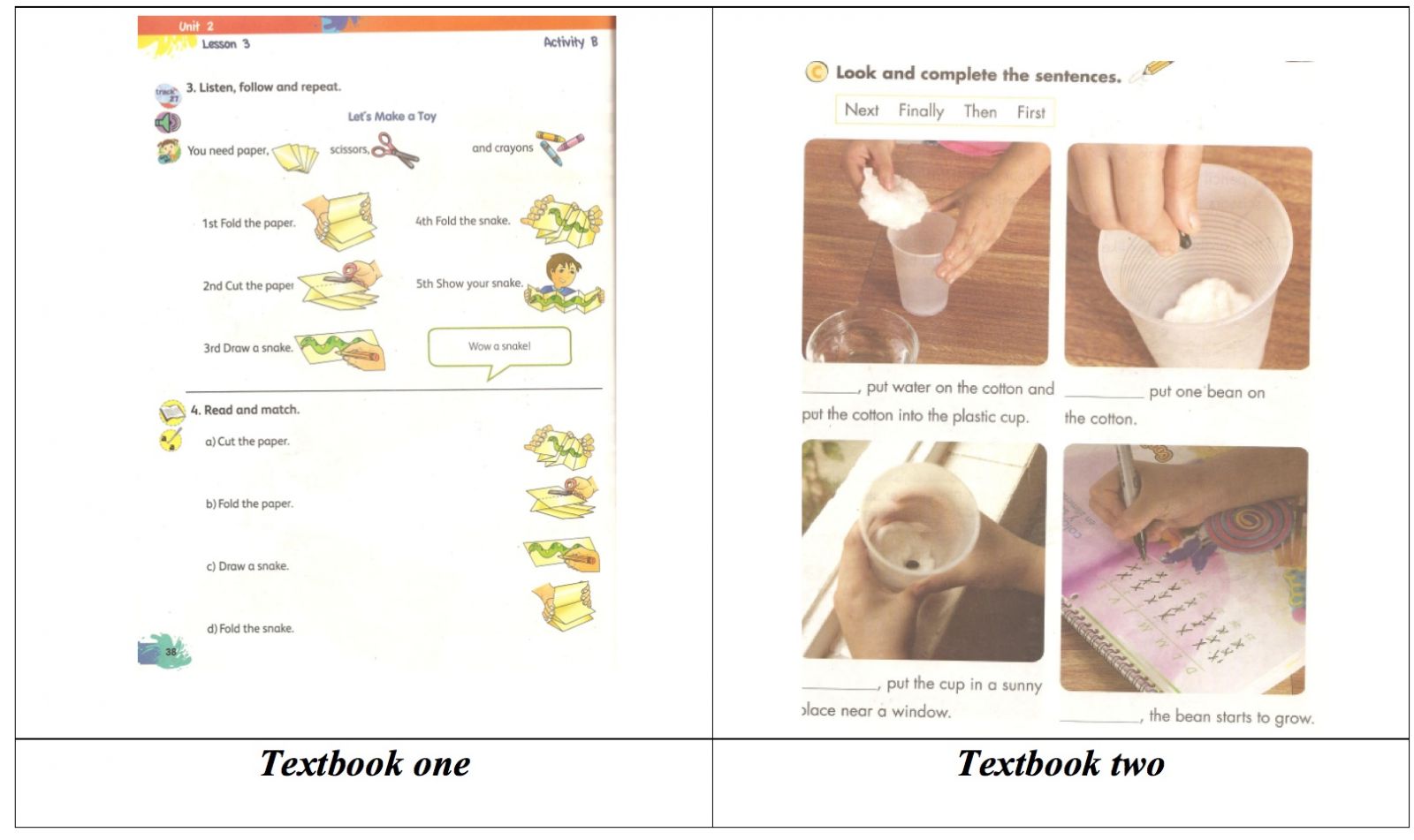
Image 12. Examples of the irrelevant and confusing text
With regard to the number of units that the textbooks have, it was observed that they are congruent with the NEPBE, which establishes 5 units in each grade. However, it was concluded that the amount of information that is intended for learning differs from one book to the other. In textbook one, the units are longer, the language content is larger and the number of activities and projects is greater than textbook two. For example, in textbook one there are 50 lessons while in textbook two there are 31. This distribution seems inappropriate taking into consideration that children are 6 years old, which means that they are not cognitively mature enough to deal with all the language production required.
Language content
What language content is included in the textbooks?
The content of textbooksone and two are coherent to the objectives of the A1 proficiency level from the CERF. Both of them contain plenty of the language structures that are needed to successfully acquire this level. However, the National English Program has established that by the end of the 2nd grade, children are not expected to acquire any proficiency level. Instead, the main objective of these courses is to have children in contact with the foreign language so that they acknowledge the existence of other cultures, acquire motivation, explore literature, reflect on the writing system, use some linguistic and non-linguistic resources to talk about them and begin developing receptive skills (Subsecretaría de Educación Básica, 2011).
It can be concluded then, that there is an overwhelming quantity of linguistic content that children need to deal with. At this age, children are expected to get the basis to understand the language, which means that activities that develop oral- aural skills should be the ones more present in the textbooks, and literacy skills would come after (Cameron, 2003; House, 1997; Burillo, et al, 2006). Moreover, it is intended that children are encouraged to know and respect other language systems as well as other cultures. Not only at the level of societies’ folklore and festivals but more importantly at the level of adopting a non-essentialist view of culture. This intention of the Mexican English program is similar to Varón Páez’s (2009) goal when studying the extent in which cultural knowledge was included in Colombian textbooks.
By looking at the global A1 level scale and the qualitative aspects of spoken use scale from the CEFR results, one can realize the abuse in the range and accuracy areas, especially in textbook one, which explicitly expects that children learn and produce 38 grammar patterns and 31 family words. Textbook two is not more sensitive in relation to the language outcomes expected. For example, it has 28 grammar structures to be learnt and 13 categories of vocabulary that children have to use. At this point, the textbook one seems to be even more demanding taking into account that the target children are younger. This tendency is marked since the very beginning of the book. According to House (1997), learning a language has an established acquisition order in which children should be in touch with listening models before they are asked to write. The main reason of this order is because writing is a complex cognitive process that involves understanding the world and learning to express those perceptions in written symbols (García & Lacasa, 2000). This process needs training and in both textbooks it does not seem to have the appropriate relevance.
Taking into consideration that children at the age of 6 and 7 are starting the process of acquiring cognitive strategies that help them learn such as repetition, organization and mnemonic strategies (García and Lacasa, 2000), it is not coherent to expect that children can deal with understanding grammar rules or recognizing sentence patterns (See image 13). These findings are quite like the Turkish course book evaluated by Tok (2010), in which activities did not promote meaningful exchanges and genuine communication in realistic contexts. Instead, grammar and isolated vocabulary was incorporated.
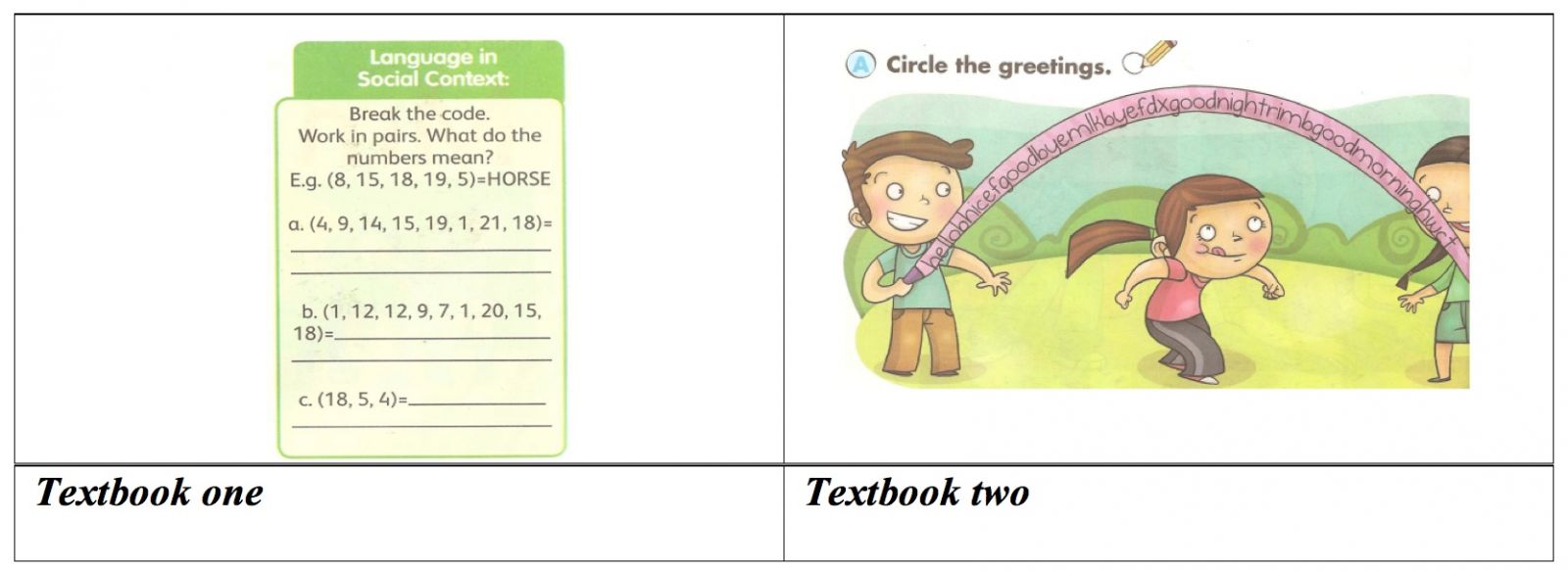
 |
Image 13. Complex activities
Regarding the oral production activities included in the textbooks, it was noted that there is a somehow coherent order in the way they are presented. For example, in textbook one there were 89 activities that asked children to listen to a model before they were required to produce some phrases or words. This type of action is supported by Puji (2005), as he states that children develop the ability to speak once they have developed the listening competence. Furthermore, in this area it was noted that the instruction ‘repeat’ was the most present. In this case, having children repeat can be considered beneficial since children at this age are developing learning strategies and repetition seems to help people to retain information in short-term memory (García & Lacasa, 2000). Nevertheless, in order to acquire higher cognitive skills, repetition should be followed by organizational activities. Both textbooks lack of this cognitive cycle training highly emphasized by Ausubel (1965, cited by Brown, 1994) in his cognitive theory of learning.
With relation to the written production activities, it was noted that both textbooks gave special attention to the development of these skills. However, it was noted that writing was not considered as a cognitive process. For example, it was observed that children were asked to complete sentence patterns (especially in textbook two) before they were asked to trace the letter symbols. Apart from that, when children had to trace letters, the configurations or formats used were not appropriate (Caroline & Nunan, 2005) since children were asked to trace block letters instead of lower case (See Image 14). Two more problems emerged in this topic (See Image 15). First of all, when lower cases letters were practiced, they were shown through a model that is not adequate. Secondly, a common instruction in textbook one was to match the beginnings of a word with its endings. These types of activities can be considered as irrelevant since children would not be able to match unknown symbols. Along with that, syllable division was not respected at all.
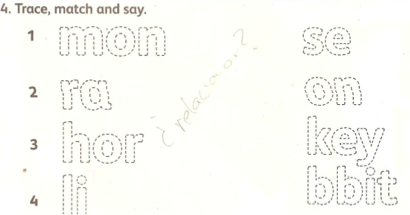
Image 14. Inappropriate configurations
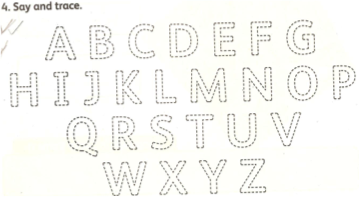
Image 15. Inappropriate model of configurations
The implication that giving children a wrong model to develop their literacy skills is that they not only will not achieve the cognitive skills that literacy skills involves, but also, they will not acquire the fine motor skills required to start hand writing.
As a final comment on the language content, it was observed that instructions to perform the activities in both textbooks are confusing. For instance, there is no consensus about the meaning of words like; say, repeats, practice, and answer. They are used to represent the same instruction, which can be confusing for children, who need to be given the right guidance to perform well.
Text-types
Are the text-types included in the textbooks coherent with the Literary and ludic environment guidelines suggested in the NEPBE?
One of the main objectives of the NEPBE is to start exploring children’s literature. In this case it can be said that there is a variety of text-types in both textbooks that could contribute positively in achieving this objective. Moreover, the objective of bringing children different text-types is to get them acquainted that languages work differently according to specific purposes. Specifically, the types of texts that are relevant to be included in 1st and 2nd grade are those that “foster a freer and more creative attitude, to encourage the students to appreciate power of the word and experience the aesthetic enjoyment that diversity and fiction can produce” (Subsecretaría de Educación Básica, 2011, p. 81).
Taking this into consideration, it was observed that most of the text-types included are not coherent with the guidelines set forth by NEPBE. First of all, the texts are unknown adapted versions of poems, stories or rhymes. Authentic English literature that allows children appreciate English is not included. Secondly as stated by Ellis and Brewster (2002), including stories into the language classroom, gives children lots of benefits. In this case, it was observed that stories are barely included (1 in textbook one and 4 in textbook two) and those which are incorporated lack authenticity and are usually focused on developing linguistic competencies rather than fostering motivation, fantasy and cultural knowledge.
Although textbook one seems to focus on developing listening skills through different text-types (listening, repeating and singing are the main instructions to be performed), the content of each text-type seems to lack interesting content as they always have the ultimate objective to incorporate a linguistic aspect. For example the counting text (Yu Chang, 2008) seen in Image 16.
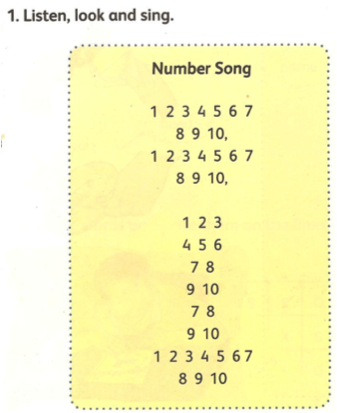
Tasks and activities
Are the tasks and activities offered by the textbooks developed in familiar, community, academic and educational environments as the NEPBE establishes?
The NEPBE has outlined the importance of focusing the tasks and activities on an academic and educational environment and in a family and community environments. The importance of doing so is for students to participate in situations that imply acting in and out of the classroom that help them successfully face the challenges of the real world. In this case, it was observed that very few activities and tasks allow children to interact in real-world situations.
Among the activities that can be considered valuable, there is one in textbook one that has to do with fostering study techniques and learning strategies through the construction of a reference book for greetings. In this case the idea has a meaningful purpose; however, the form in which is it presented is not appropriate as it asks children to write when they have not been taught to do so. Children at this age are not completely mature to distinguish and deal with the writing system. For example, in Image 17, it is seen how a second grade child’s writing is still in process.
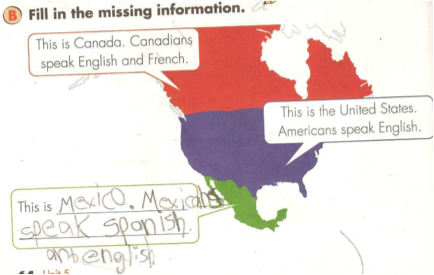
Image 17. A second grade child's writing
Another important aspect to mention is that most of the activities that claim to be developed in social or academic environments are represented in isolated ways. Others claim to make children interact by giving them artificial patterns that are likely to not be real or meaningful. For example in Image 18, the given dialogue is not likely to happen in real life as most of the children attending public schools in Mexico are Mexicans. The assumption that suggests that children have a natural instinct for speaking and interacting (Halliwell, 1992; Irujo, 1997; Cameron, 2003) is not beign considered. Otherwise authentic language activities, non-predictable exercises and non-pattern practice would not be the majority of the activities in both textbooks. This finding coincides with Tok’s (2010), who considered that the Turkishtextbook did not encourage sufficient communicative and meaningful practices.
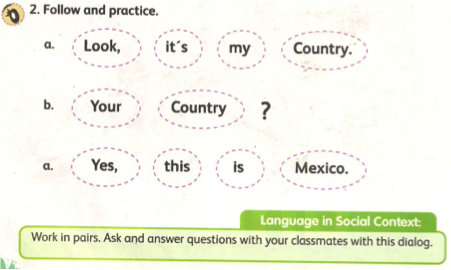
Image 18. Unauthentic dialogue
Additionally, there is an area in ‘Let’s Think’ that tries to connect the content language with real life. This area is far from promoting reflection or connecting previous knowledge as it contains questions that children are not able to answer so it is unworthy of appearing on the main page. Instead, they can have a drawback as they can make children feel language is boring because of the sobriety in which it is presented.
Games are a useful technique to use with children. However they were not found in any of the textbooks. Some activities that were considered by the authors of the books as games are actually learning activities (See Image 19). Therefore, they do not convey any fun for children. As Halliwell (1992) and Ur (1996) suggest: including both games and learning activities gives children the opportunity to translate understanding into physical reactions. This is especially important since children have an inner instinct for play and fun. Another aspect to comment is that the interaction promoted by these kinds of activities does not represent a natural way of communication. It was observed by the children’ positions that they do not interact face to face as in natural conversation exchanges.

Image 19. A learning activity used as a game
Approach
Are the textbook aligned with the Social Practices Approach suggested in the NEPBE?
Social practices of the language are ways of spoken and written interactions that have a specific communicative purpose depending on social and cultural conventions (Subsecretaría de Educación Básica, 2011). Taking this into consideration, and although both textbooks claim to be aligned with the social practices approach (at the back cover of the textbooks), it can be concluded that the whole activities, language content, instructions and text-types do not support this statement. Instead, it was observed that they are designed under a ‘behavioral approach’ where children are expected to produce observable outcomes.
At first glance, textbook one has characteristics that suggest that it is designed under the foundations of a social constructivism learning theory. For example, there are 41 activities under the heading ‘Language in social context’ in which children are given different instructions in order to practice the new language in contexts that are known to them or that represent everyday situations. There are also 8 projects that promote knowledge construction through manual activities which have (most of them) as their main purpose to share them with other children. This special section is called ‘Socialize your project’ (See image 20). However, there are also some activities that may reflect a ‘behaviorist perspective’. For instance, the instruction ‘repeat a pattern’ is mentioned more than 100 times in activities, which suggests that textbook one has foundations of the ‘audio lingual method’.
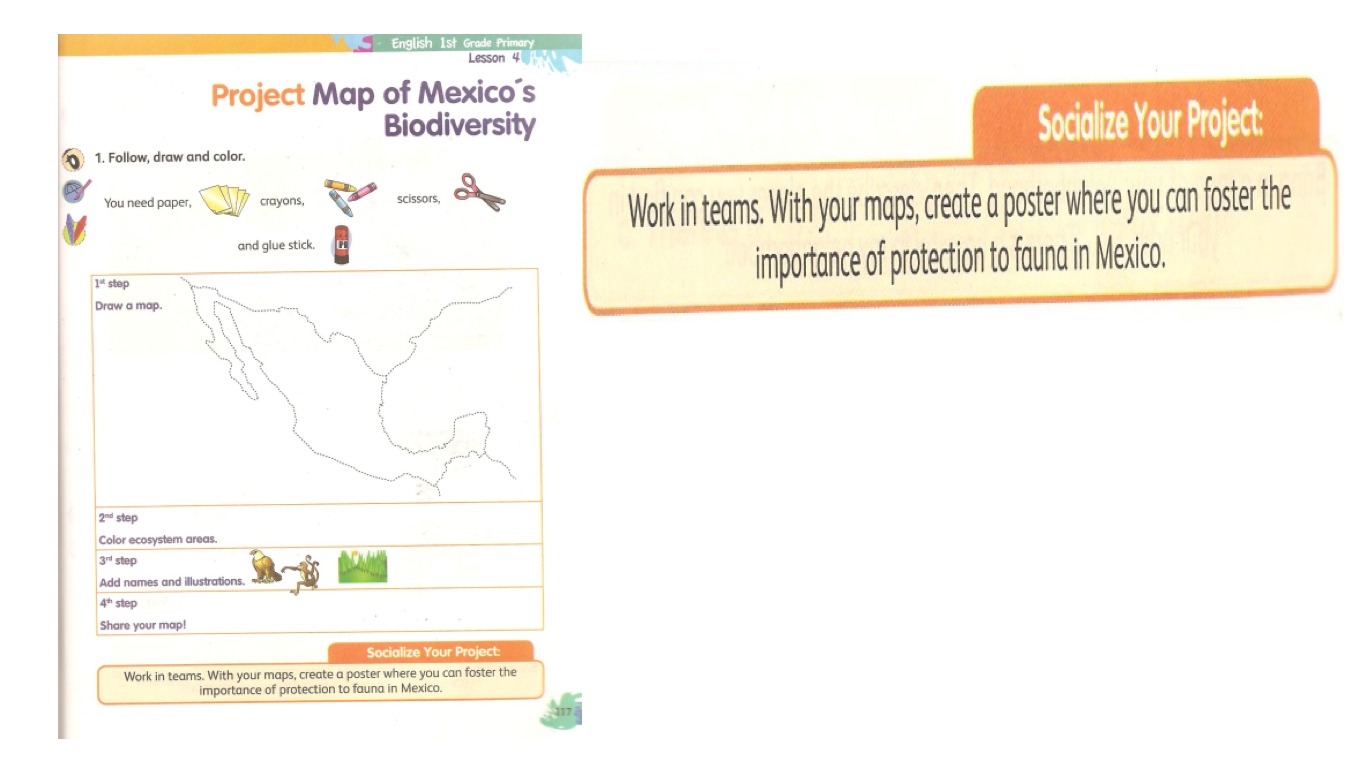
Image 20. Section 'Socialize your project' in textbook one
With regard to textbook two, which claims to be ‘based on the idea that learning a language is a social process’ (Day, 2010), it is not clear about the approach in which is constructed. There are activities that promote interaction in social settings but they end up focusing on developing accuracy. For example, the instructions for completing or unscrambling sentences or answering questions that are focused on grammar knowledge and construction (See Image 21) are quite present in this textbook. There are more than 60 activities of this type.
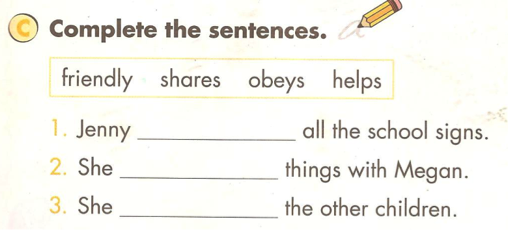
Image 21. Activity fostering grammar knowledge.
It is important to mention that, some attempts to create opportunities for children to interact with communicative purposes were found. For example, in both textbooksit is emphasized the exchange of polite language inside the classroom as a way of genuine interaction.
Competencies development
Do the textbooks contribute to the development of the ‘specific competencies’, related to the doing with, knowing about, and being through the language?
Both textbooks focus on developing the ‘knowing about the language’ more than developing the other two areas. This imbalance reflects not only the little value that the ‘doing and the being through the language' has been given but also the incongruence that they have in regard to the NEPBE.
Among the techniques to teach grammar and vocabulary, it was observed that traditional practices such as filling in the blanks, choosing the correct form of the verb, completing sentences, and unscrambling sentences were the ones that covered most of the activities (See Image 22).

Image 22. Grammar-oriented exercises
With regard to the ‘doing with the language’, the activities were found to be unreal and without meaningful purposes. Doing with the language does not mean that children manipulate objects just because. As Irujo (1997) suggests “Children learn by doing something that has an authentic purpose”. In this case, the projects presented in both textbooks seem to have the intention of making handcrafts without any other purpose (See Image 23). Communicative purposes are to exchange information, convince people, invite friends, explain reason or processes, clarifying, describing objects, etc. When children feel they are doing, creating or writing something and their creation is just signed by the teacher and never seen or mentioned again, the meaningfulness of the activity is converted into a pure academic task.
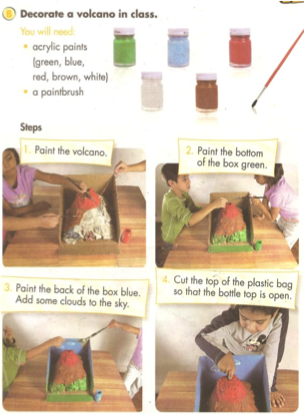
Image 23. Projects without any meaningful purpose
In relation to the ‘being through the language’ it was noted that just in textbook two there are some elements that teach children how to act in different environments of social life, how to value the consequences of their actions and how to become aware of their own culture and others. Some examples were shown in Image11. Nevertheless, this example is not enough since the basic social conventions are left out. For instance, although everyday expressions are included (formal and informal greetings, polite expressions to ask for permission), the word ‘Thanks/Thank you’ is not emphasized as part of everyday discourse. The only way this word appears is as part of the constructed dialogues: Hello, how do you do/ I’m fine thank you. However, only once is present. Moreover, the expression I’m fine. Thank you is asked to be translated and not to be practiced as a part of daily speech.
Cultural content
How do the textbooks incorporate the knowledge of other cultures and languages?
Both textbooks, especially textbook two, include some elements that can be categorized as cultural, like pictures of people from other countries and words and expressions of other languages. This incorporation helps in a minimum way to achieve one of the NEPBE’s purposes; acknowledge the existence of other cultures and languages. If we take into consideration Adaskou, Britten & Fahsi’s (1990:3-4 cited by Clouet, 2005) definition about Culture we can say that the textbooks do not include any of its senses. This lack of literature, cinema, music, family organization, interpersonal relations, customs, etc. of other societies reduces the teaching of culture to the presentation of isolated images that do not represent anything to children. This reduction leads to the formation of stereotypes that do not help in understanding other cultures but thinking that people of those societies are strange. An effective way of teaching culture is to carry out comparative studies. Not only about the cultures whose language is being taught but also comparing respectfully other cultures and languages. Focusing on more than two cultures helps students to understand a wide range of geographic environments, population sizes, racial groups, levels of subsistence and language backgrounds. In this way, children realize that there are other cultures similar to theirs in which foreign languages are used. This approach allows in-depth comparison of cultures, with the aim that students understand the differences. It is important also to incorporate culture at the level of values and behaviors (Irujo, 1997).
These findings can be categorized into Varón Páez’s classification of culture view. Then, considering the limited cultural expressions included in both textbooks (despite the fact that sensibilization towards other cultures is the prime objective of teaching English to children at these academic grades) and taking into account that culture is represented by physical aspects of societies as people’s clothes, skin color and language, it can be said that both textbooks have an essentialist view of culture (Varón Páez, 2009). They do not promote intercultural knowledge at all and do not invite children to reflect and respect their and others cultures. Even when language and culture has been considered as a non-separable concept (Varón Páez, 2009), in both textbooks this relationship seems to be of little relevance.
Conclusions
A pedagogical Evaluation of textbooks used in Mexico’s National English Program in Basic Education is the result of a personal interest for having more information about how the teaching of English is being carried out in basic education. I realized from my own teaching experience that textbook evaluation using ample pedagogical criteria was not a common practice in institutions. Usually in relatively small institutions like mine, teachers and languages coordinators select the books they will use, using as criteria some elements that are relevant to their needs and objectives. However, at a macro level, the selection of textbooks implies a careful evaluation of them. It was also relevant for me to analyze the characteristics of the textbooks that a whole nation would use, especially because these textbooks are addressed to children and because there is an official curriculum to be followed.
As a conclusion and in order to answer the main question of this research, Are the textbooks used in 1st and 2nd grades in the National English Program in Basic Education pedagogically appropriate for children, according to the syllabus guidelines and theoretical foundations?, it can be said that both textbooks have some elements that can be considered as appropriate for children. Nevertheless, in general terms, both textbooks have been designed without taking into consideration important fundamentals related to teaching to children.
First of all, the physical appearance seemed to be appropriate at first glance; however, it was concluded that there is not a balance between the real and the fantasy representations of the world that is shown through pictures. Moreover, it was observed that some of the photographs promote ideal ways of living by incorporating elements that are only available to those of high economic status. Apart from that, gender biases as well as stereotypes were found.
Regarding the language content, it was observed that both textbooks are grammar-oriented as the developing of linguistic awareness of the English language is the basis of activities and tasks. Furthermore, it was detected that children are exposed to a heavy amount of activities that require them to demonstrate their literacy skills, even when they have not been trained to do so. Besides, children at this age are not cognitively mature.
With relation to the text-types included, it was observed that although children are exposed to different representations of written language, such as stories, poems, chants and rhymes, they have a linguistic objective. Few text-types were found that fostered enjoyment and cultural and literary appreciation.
With regard to the tasks and activities found, they can be considered as not completely responding to the NEPBE’s curriculum since very few activities convey interaction in real world situations. The tasks keep a traditional format in which isolated dialogues, expressions and vocabulary are presented.
Regarding the competencies development, it was observed that the ‘knowing about the language’ seemed to be the main objective in English language teaching at 1st and 2nd grade. Nevertheless, the NEPBE clearly states that children at this age should be more involved in the ‘doing with the language’ and the ‘being through the language ’ since one of the reasons for teaching English in the early years is to acknowledge the existence of other cultures by being involved in meaningful and interactive contexts.
Finally, in relation to the cultural content, it was observed that this area is not considered as an important component in the textbooks. Culture was incorporated in a limited and superficial way; where the culture has been reduced to the representation of folklore and traditional clothing. Components like music, literature, history, and people’s way of living in other countries were not included.
All in all, after having evaluated the textbooks it can be concluded that both publishing companies (Mexican and American) did not fully design their material considering essential areas for teaching English to children. In addition, it was concluded that the Ministry of Education has a great challenge in relation to the supervision of the materials that it approves to be used. What is learnt from this research is that designing materials, and particularly textbooks, should not be based on what we think might be true or what we want to believe about children. Instead, this practice should be informed by what we know from theory and literature about how children develop and learn foreign languages.
Recommendations
Having completed this research about the pedagogical and cultural value of the textbooks used in the National English Program in Basic Education, some recommendations can be drawn related to their design.
1. Taking consideration the characteristics of the child not only as a language learner but also as a whole subject; his cognitive, social and psychological development. The empirical evidence about what children like and enjoy or how they learn should not guide designing textbooks for children. Instead scientific knowledge about their natural characteristics should be the basis for decision-making.
2. Incorporating activities into the textbooks that develop the oral-aural skills before children are required to read and write. This is especially important not only because it is the natural order in which they acquire their mother tongue but also because cognitive processes are involved.
3. Incorporating effective techniques such as the phonic model, authentic literature and games (Caroline and Nunan, 2005) to develop the literacy skills.
4. To carefully select the environments in which learning will take place, combining the academic, educational, the familiar, community, literary and Ludic practices (Subsecretaría de Educación Básica, 2011).
5. To follow the purposes of the National English Program in Basic Education focusing on developing awareness of other languages and raising interest and motivation towards intercultural knowledge instead of introducing linguistic components.
6. To involve children in real and meaningful tasks where culture, which has a relevant role, can be fostered (Irujo, 1997).
7. To incorporate enough text-types that allows children to learn and appreciate language and culture by means of enjoyment.
References
Brown, D. (1994). Principles of Language Learning and Teaching. USA: Prentice Hall Regents.
Burillo, J. C. (2006). Las lenguas Extranjeras en el Aula. Barcelona: Graó.
Cameron, L. (2003). Teaching Languages to Young Learners. United Kingdom: Cambridge University Press.
Caroline, C., & Nunan, D. (2005). Practical Englsih Languagw Teaching to Young Learners. New York: Mc Graw Hill.
Clouet, R. (2006, May 22). Between one's culture and the target culture: the language teacher as intercultural mediator. Porta Linguarium, 5, 53-62.
Da Cruz, F. (2010). Developing Multiculturalism with Children in Schools:“Analysis of primary English Foreign Textbook Contrasting to a brazilian textbook''. (W. T. University, Ed.) The Journal of Multiculturalism in Education, 6(1).
Day, M. (2010). Do it! Activity Book. México: University of Dayton Publishing.
Ellis, G., & Brewster, J. (2002). Tell it Again! The New Storytelling Handbook for Primary Teachers. Penguin Longman.
García, J., & Lacasa, P. (2000). Procesos Cognitivos Básicos. Años Escolares. In K.
Graves, K. (2000). Designing Language Courses. Canada: Newbury House.
Ghosn, I. (1997). ESL with Children's Literature. Forum, 35 (3), 14.
Halliwell, S. (1992). Teaching English in the Primary Classroom. Singapore: Longman.
House, S. (1997). An Introduction to Teaching English to Children. London: Richmond.
Hutchinson, T., & Torres, E. (1994). The Textbook as agent of change. ELT Journal , 48 (4).
Irujo, S. (1997). Teaching Bilingual children: Beliefs and Behaviors. U.S.A: Heinle & Heinle Publishers.
Litz, D. R. (2005). Textbook Evaluation and ELT management: A South Korean Case Study. Thesis. University Ai Ain.
Puji, W. (2005). Teaching Children Using a Total Physical Response Method.
Sayer, P. (2012). English for Young Learners, the PNIEB. Manzanillo.
Secretaría de Educación Pública. (2007). Programa Sectorial de Educación 2007-2012. México: Comision Nacional de Libros de Texto Gratuito.
Secretaría de Educación Pública. (2011, Junio 3). Subsecretaría de Educación Básica. Retrieved from http://basica.sep.gob.mx/seb2010/start.php.
Soderman, A., & Oshio, T. (2008). The Social and Cultural Contexts of Second Language Acquisition in Young Children. European Early Childhood Education Research Journal , 16 (3), 297-311.
Soria, M., & Castañeda, A. (2010). English. 1st grade Primary .Mexico: Fernandez Editores.
Subsecretaría de Educación Básica. (2011). National English Program in Basic Education. Curricular foundations. Preschool, Elementary school and Secondary school.México: Secretaría de Educación Pública.
Subsecretaría de Educación Básica. (2008). Reforma Integral de la Educación Básica. Acciones para la articulación curricular 2007-1012. México DF: Secretaría de Educación Pública.
Tok, H. (2010). TELF textbook evaluation: From teachers' perspectives. Educational Research and Review, 5(9), 508-517.
Ur, P. (1996). A Course in Language Teaching. Cambidge: Cambridge University Press.
Varón Páez, M. E. (2009). Cultural Component, Textbooks and Teaching of English as a Foreign Language. Forma y Función, 22 (1), 95-124.
Wang, W. (2008). Teaching English to Young Learners in Taiwan: Issues Relating to Teaching, Teacher Education, Teaching Materials and Teacher Perspective. Thesis. Taiwan: University of Waikato.
Weir, C. & Roberts. (1994). Evaluation in ELT. Oxford: Blakwell Publishers.
Yu Chang, J.-F. (2008). The Role of Children's Literature in the Teaching of English to Young Learners in Taiwan. Asian EFL journal . University of Waikato, Taiwan.
[1]The study ‘Recursos Educativos en las Aulas Didácticas de Inglés en las Primarias Públicas de México’ was made from data that a group of researchers from Baja California Norte, Colima, Durango, Guanajuato, Jalisco, Hidalgo, Tlaxcala, Sonora and Quintana Roo had collected as part of a national project called ‘La enseñanza del Inglés en las primarias Públicas de México’ coordinated by Dr. José Luis Ramirez Romero.

